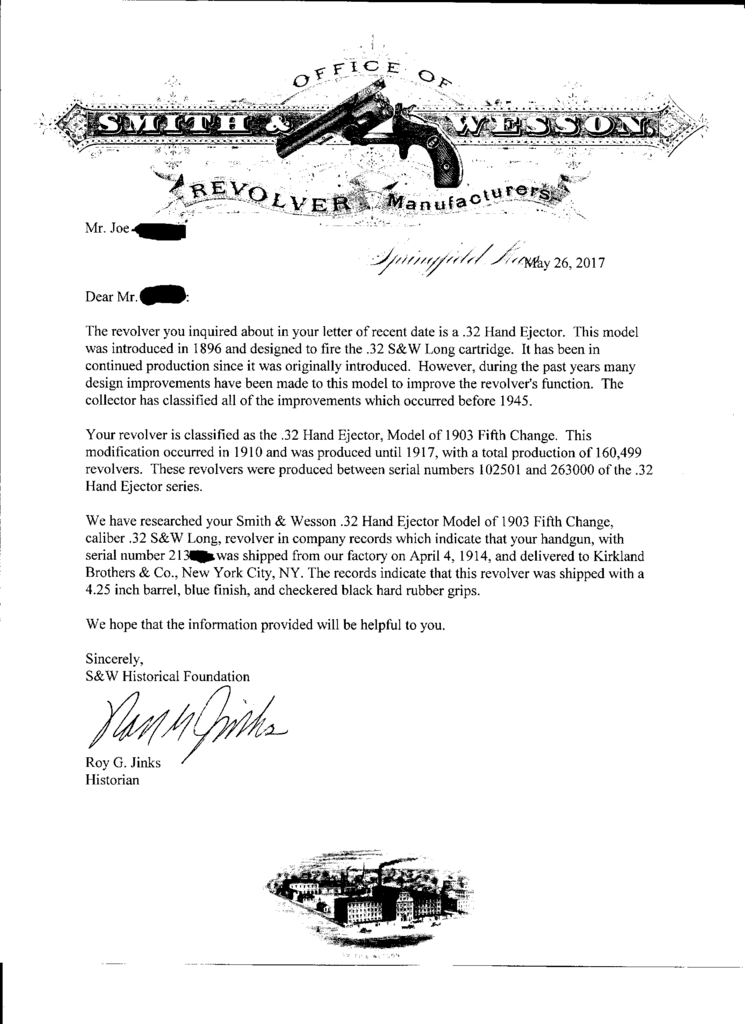Trooper Joe
New member
I posted this revolver before on another thread, however, I just received my letter from Roy Jinks (S&W Historical Foundation) indicating that the gun was made in 1914, not 1920 like I first thought. This is my first letter I have asked for, for any of my Smith and Wessons. It was real exciting and makes owning this gun even more special.

Not to good of a copy of the letter, but I think you can see all of the neat details.

As I mentioned before, I think this will be my only revolver that I will not shoot since I don't think it has ever been fired before.


Trooper Joe

Not to good of a copy of the letter, but I think you can see all of the neat details.

As I mentioned before, I think this will be my only revolver that I will not shoot since I don't think it has ever been fired before.


Trooper Joe
